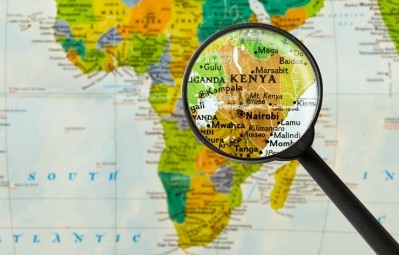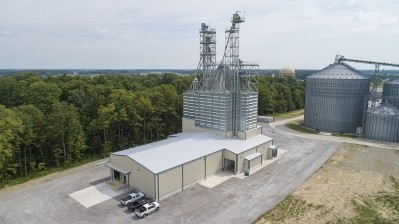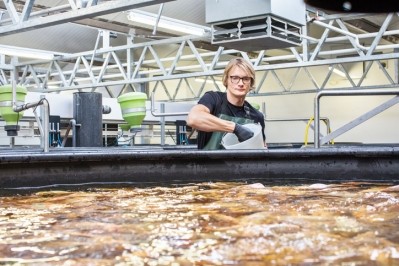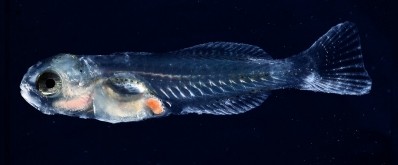'The goal of the company is not only to raise fish but to do it in such a way that we create an industry'
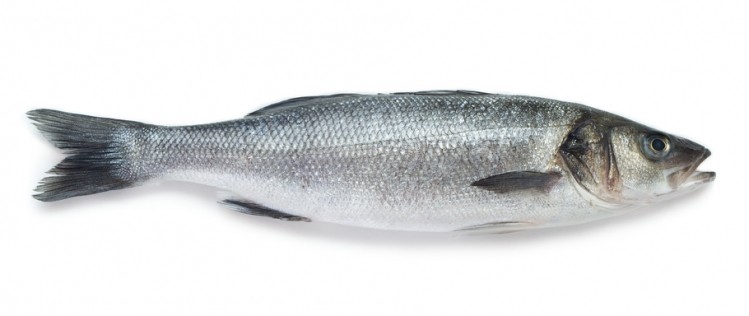
The group’s first facility in Waterbury, Connecticut is almost complete and has already started fish production, said Matt Dawson, facility manager for the company.
The facility will be producing European Sea bass (Branzino).
There are about 150,000 fish already on site that should be ready to harvest in the next few months, said the facility manager.
“We have four functional quarantine systems that allowed us to bring in fish with the construction,” he told FeedNavigator. “We have started to move fish into the grow-out system from the quarantine rooms and that allows us to start to use the larger tanks.”
Although there have been some challenges in raising fish during the construction process to develop the current facility it also has allowed the company to move forward with production goals, he said. “It will help us get the ball rolling,” he added.
“The [juvenile] fish we receive today, they come in at about 0.2g and the market size is 500g and takes 13-14 months to get to that point,” said Dawson. “We’ve been under construction now for about a year and a half – if we’d waited until we were done we wouldn’t see any revenue until a year from now.”
However, finishing work on the building and raising the first crop of fish are not the only projects the company has in progress, said Dawson. Plans are already in progress to obtain a Best Aquaculture Practices (BAP) certification as traceability and sustainability remain important elements for the company.
“We’re in the process of getting the BAP, which is required for some retailers,” he said. “We’ve sent some of the samples out already and we’re having positive feedback.”
The initial market focus for the whole fish being produced includes the area around New York City and Boston, he said. However, that is anticipated to expand.
Additionally, as the company develops in the next 5 to 10 years, the expectation is to have opened a second and potentially a third production facility in the same region, he said.
“The goal of the company is not only to raise fish but to do it in such a way that we create an industry – our goal is to take this model of the system we have here and replicate it,” said Dawson. “The idea would be to stay in Waterbury, [Connecticut] as that would allow us to create more functionality between the facilities because even if we’re raising different species, it’s likely that the feed supplier and raw materials or salt supplier would be the same source.”
Feed sourcing
Currently, the Ideal Fish project is sourcing feed from a Canadian feedmill that produces feed for Skretting, said Dawson. The facility is already BAP-certified for feed production.
Few facilities in the US have that certification, he added.
“Over time we’re looking at ways to improve feed costs because they’re 50-60% of production of an RAS [recirculating aquaculture system],” he added.
Additionally, the feed used in the system has to be evaluated for feed conversion and the fish-in, fish-out ratio, for certification purposes, he said.
Another intention is not to include antibiotics in the feed or with fish production, said Dawson.
“Because we’re using water that is safe and from a sustainable water source that is being disinfected we have no need for concerns about pathogens coming in,” he said. “We won’t necessarily need to use antibiotics in feed to ward off a potential disease.”
“We do analyses to make sure that the livestock are healthy, but by being proactive and having the controlled environment and having proper biosecurity, we won’t have to have antibiotics in the feed,” he said. If a disease issue develops any antibiotics used would be prescribed as a treatment by the company’s veterinarian, he added.
Facility details
The 60,000 square foot facility houses a land-based tank aquaculture system, said Dawson. It includes a series of quarantine systems and a grow out system with larger tanks.
“We reuse about 90-95% of the water and the source of our water is city of Waterbury water,” he said. “Our water gets sent back to the waste treatment facility and they are able to handle that – we’re a drop in the bucket for them in terms of having to process the water.”
The location for the facility was selected based on several factors, including proximity to the intended market, availability of infrastructure and an adequate water supply with water treatment capabilities, he said. “We can supply a good amount of fish and hopefully as we expand to other facilities in the area – we could provide not only to New England area but to the East Coast – we’re not limited as we grow,” he added.
Currently, fingerling fish are being brought in from hatcheries in the Mediterranean where European Seabass has been raised in aquaculture systems for several years, he said. The plan for future development includes adding a hatchery at some point as it can be a bottleneck for aquaculture production.
When the site reaches full production the current facility will be expected to produce about 6,000lbs of fish a week or 140 metric tons a year, said Dawson. However, the company is not anticipating reaching that production level until about 2019.
“The goal would be to have a regular delivery of fish,” he said. “We’ll be able to facility harvest every week so the question becomes maintaining the production level that we’re trying to achieve.”
